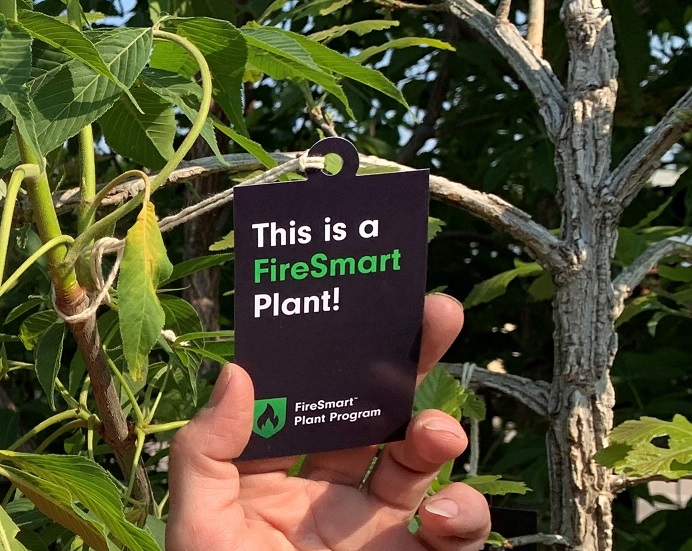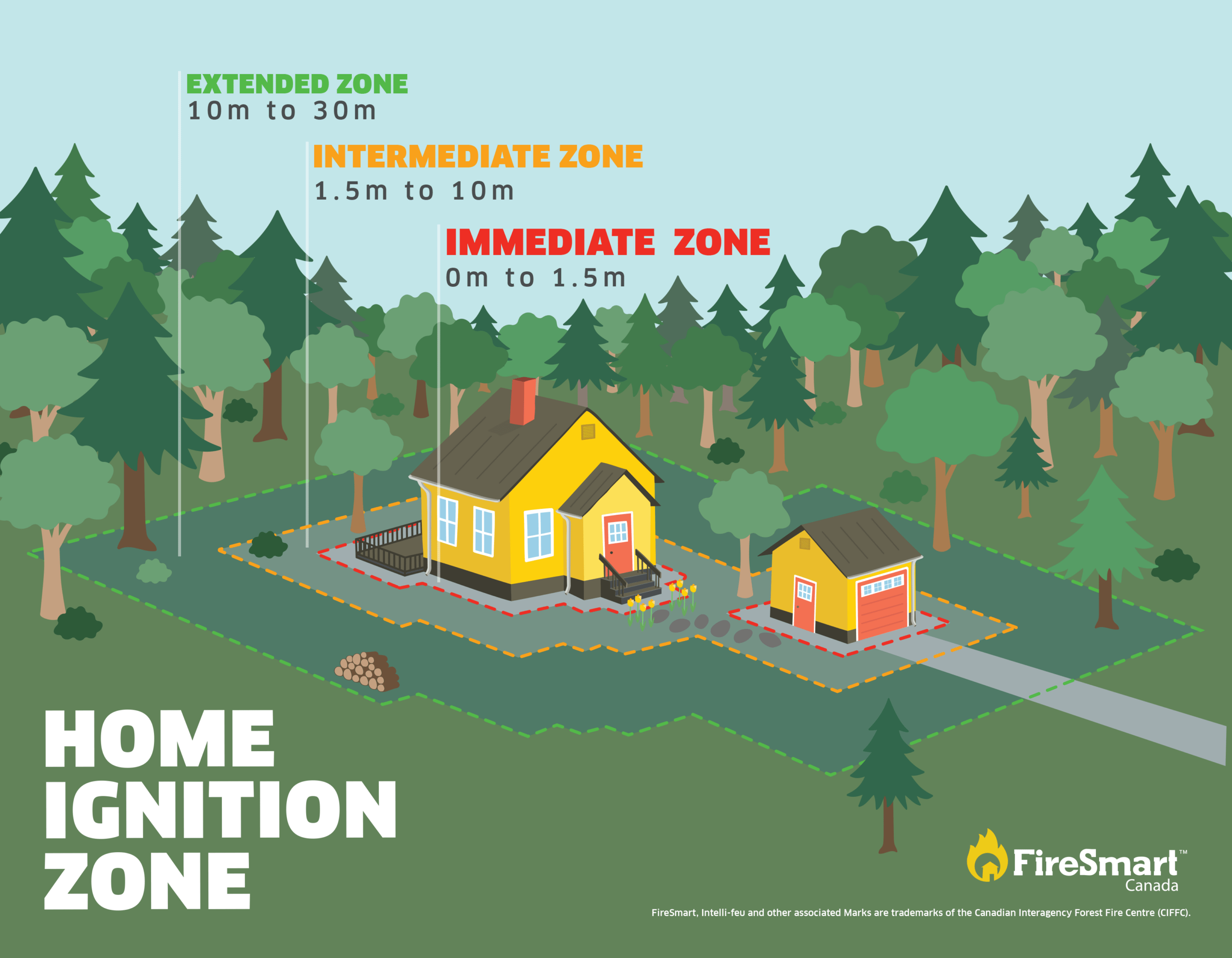The Home Ignition Zone is the area within 30 metres of your home and structures. It is made up of three priority areas: The Immediate Zone, Intermediate Zone, and Extended Zone.
Read about FireSmart changes you can make
Depending on your lot size, you may only have the ability to control some of the zones listed above. It's important to incorporate FireSmart changes, where possible on your property, to reduce your risk of future wildfire damage.
A full list of tips for each priority zone can be found in the FireSmart Begins at Home Guide








